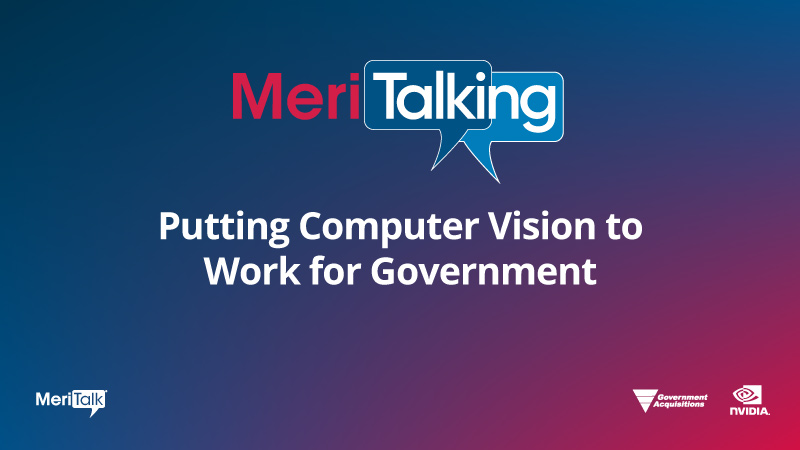
Processing documents and mail. Scanning for nutritional fact panels. Measuring axial stress in railroads. Automatically decoding license plates. Measuring pulses. These are just some of the ways computer vision (CV) is helping Federal agencies meet their missions today.
CV is a field of artificial intelligence (AI) that enables computer systems to discover meaningful information from digital images, videos, and other visual inputs. CV then uses the information to act or make recommendations for human consideration.
With CV, we “train models that allow a computer to look in its environment and begin to understand what’s around it,” said Mike Broadwater, vice president of technology services at Government Acquisitions Inc., in a new MeriTalking podcast.
AI and machine learning capabilities, coupled with CV, are helping organizations around the world make significant advancements in security and operations. CV applications are still nascent in the Federal government, but the potential is great.
Agencies just getting started with CV should consider projects that fit into a couple of categories, advised Ryan Simpson, senior data scientist at NVIDIA. These include:
- “Soft problems” such as license plate recognition and people counting, that can be addressed with commercial-off-the-shelf products; and
- Legacy systems that are generating quality data outputs.
The latter, Simpson said, “are generally very good candidates … because you’ve already bootstrapped the data labeling process by being able to use the outputs of those legacy systems.”
Data management and AI skill sets are some of the biggest challenges for agencies seeking to use CV, Simpson and Broadwater observed.
“A rail scanning car may be sitting in the train yard in Philadelphia, but the computers are back in the data center in D.C.,” Broadwater noted. “So how do we get that data there? Who owns that data? How do we know it’s the right data? The answers to those questions are critical as agencies begin CV projects,” he said.
Then, agencies need staff who know how to tag data, make it available to training algorithms, and train models. Some agencies have this skill set, and others don’t yet. Agencies that don’t have a deep bench of AI expertise should “start small with a pre-trained model that your team can get in and work and understand how the model is going to react in your environment,” Broadwater advised.
For more advice on effective planning and implementation of CV projects, listen to the full interview.
